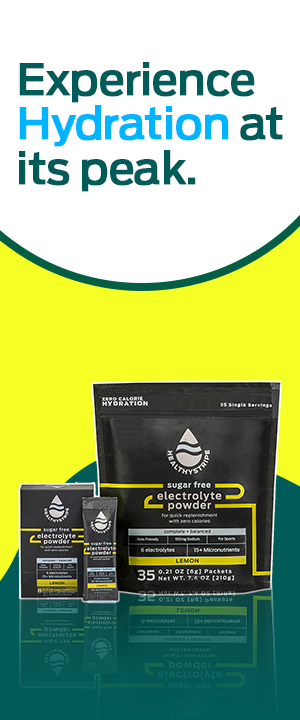Fasted Training – How To Do It + Pros & Cons

When you work out in spite of being on a fast, the training is called fasted training.
Not many people support the idea because it can lead to excessive stress and even muscle loss – which is almost a bane in the fitness world. But, when done right, fasted workouts have many benefits you don’t want to miss out on.
In this article, we’ll discuss these benefits and also the drawbacks of exercising while on a fast. This will help you make an informed decision of whether to practice it or not.
Before that, however, let’s learn how to actually do it.
How To Workout While Fasting – The Right Way!
Working out is not too easy when you haven’t consumed good pre-workout food – which, by the way, has its own benefits.
But your body needs enough energy to use for the workout. And you don’t have that in the fastest state. So, make sure of the following.
- Do not miss the previous day’s dinner.
- Stay away from high-impact workouts (you can do walking, jogging, light resistance training, etc.)
- Get a post-workout meal as soon as possible after the workout.
- Carry a snack (like a banana or energy drink) with you when you go out exercising, just for emergency’s sake.
Also Read: How much water should an Athlete drink
Advantages of Fasted Training
1) Burn More Fat
When you fast (or even on a keto diet) the body burns your glucose stores during the time you don’t eat anything. This means there is no glucose left for the body to burn during the workout.
So, when you do training while fasting, it starts burning your fat stores. Thus helping with weight loss.
And that’s not us saying this. According to 2015 research, exercising before breakfast tends to increase fat oxidation over the next 24 hour period.
2) Reduced Appetite
When you practice fasted training – be it cardio or lightweight training, often, you make your body capable of functioning without food. Eventually, the mindset you develop with this practice helps to lower your overall appetite.
3) Better Endurance
The maximum quantity of oxygen your body can use when exercising is measured by your Vo2 max. Peak oxygen uptake is another term for it. This is a crucial metric to use when determining your endurance. Guess what? Fasting cardio raises Vo2 max over time.
In a 2010 study, participants who did fasted weight training got a larger training-induced increase in Vo2 max than those who had a meal before the exercise.
Also Read: How much water should an Athlete drink
4) Increase in Growth Hormone
Did you know fasting for two days can result in a 5-fold increase in endogenous growth hormone synthesis over a 24-hour period?
What’s the growth hormone, you ask?
Human growth hormone (HGH) is a hormone that aids in the maintenance, growth, and repair of healthy tissue in the brain and other organs. This hormone can aid in the speedy recovery of an injury and the restoration of muscle tissue following exercise.
The fast recovery helps in the development of muscle growth, the acceleration of metabolism, and the burning of fat. It’s not an exaggeration to state that it slows down the aging process.
Like fasting, aerobic and resistance exercise, too, cause considerable, immediate increases in growth hormone secretion.
Fasted training benefits by a multifold when both fasting and exercise happen together, and raise your HGH levels.
Disadvantages Of Fasted Training
1) Muscle Loss
The best foods for muscle mass and strength always include a good amount of carbohydrates and proteins. That’s because both of these have a great role to play in muscle building.
However, fasted-training involves little to no carbohydrates. This leads your body to turn to fats for energy.
What if you don’t have enough fats? This can be the case if you have put yourself into prolonged fasting or are using your fat energy sources extensively by engaging in high-intensity activities like heavy weight lifting.
When your body doesn’t have the required fats, it turns to proteins. That means it starts burning your muscles, which are not easy to build in the first place.
That’s why we mentioned in a previous section that you should have dinner – before you go working out the next morning in a fasted state. And also that you should stay away from high-impact exercises.
2) Low Energy
Some types of exercise, such as high-intensity interval training (HIIT) or heavy lifting require putting in a lot of work to get the benefits.
When you train while hungry, though, it’s impossible to give it your 100%. That’s because your body is already working hard to burn fat for energy due to the lack of glucose.
Even studies prove it.
According to one, giving athletes 100 grams of carbohydrates before cycling boosted their time to exhaustion considerably when compared to their fasted counterparts. In other words, meals enabled them to ride their bikes for longer periods of time.
You should also know that it’s easy to begin despising exercise if you push yourself to work out in a low-energy starved state day after day.
3) Stress
Fasting is a source of stress just like exercise.
When these stressors are appropriately applied, they injure your muscle tissue. And that is subsequently healed and rebuilt, resulting in stronger muscle.
However, if you push your body beyond its stress threshold by combining two stressors such as fasting and exercise for an extended period of time, your cortisol levels may rise.
The rise in this stress hormone’s levels can lead to weight gain. Thus, undoing your efforts of fasted training for fat loss.
That’s why you should do fasted exercise only the right way.
The Bottom Line
Now you know about fasted training benefits and drawbacks. We also shared the correct way of engaging in fasted workouts so only experience the pros and avoid the cons.
If you are thinking about starting this practice, make sure not to pressure your body day after day. You can start with doing fasted-training once a week.
Also, keep track of your workouts and how you felt during each one, as well as whether or not you fasted.
If you find that you perform better when you eat first, a fasting workout may not be adequate to compensate for your performance losses. And that would mean you need to understand more about pre-workouts and the best time to consume them, among other things.
Even if this training isn’t for you, it may help any gym buddies of yours, so make sure to share this article with them.









